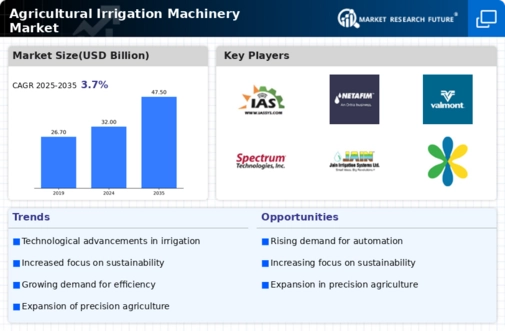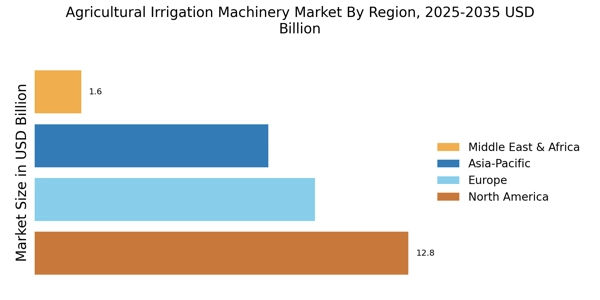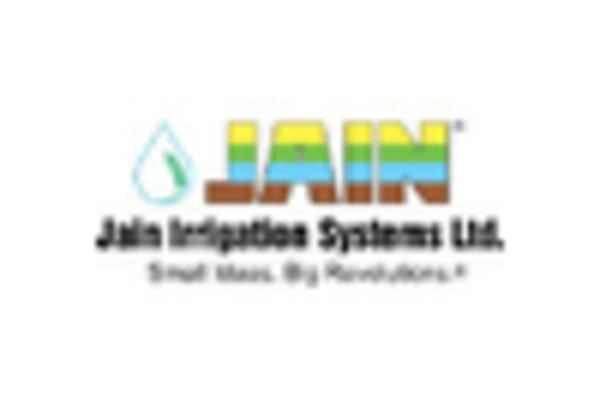Rising Water Scarcity
The increasing prevalence of water scarcity is a critical driver for the Agricultural Irrigation Machinery Market. As populations grow and climate change exacerbates drought conditions, the demand for efficient irrigation solutions intensifies. Reports indicate that by 2025, nearly 1.8 billion people will live in areas with absolute water scarcity, necessitating advanced irrigation technologies. This scenario compels farmers to adopt modern irrigation systems that optimize water usage, thereby enhancing crop yields. Consequently, the Agricultural Irrigation Machinery Market is likely to witness substantial growth as stakeholders seek innovative solutions to mitigate water shortages and ensure sustainable agricultural practices.
Technological Innovations
Technological advancements play a pivotal role in shaping the Agricultural Irrigation Machinery Market. Innovations such as precision irrigation, automated systems, and smart sensors are revolutionizing traditional farming practices. For instance, the integration of Internet of Things (IoT) technology allows for real-time monitoring and management of irrigation systems, leading to improved efficiency and reduced water waste. Market data suggests that the adoption of these technologies could increase crop productivity by up to 30%. As farmers increasingly recognize the benefits of these innovations, the Agricultural Irrigation Machinery Market is poised for significant expansion, driven by the need for enhanced productivity and resource management.
Government Support and Policies
Government initiatives and policies aimed at promoting sustainable agriculture are instrumental in driving the Agricultural Irrigation Machinery Market. Various countries are implementing subsidies and incentives to encourage farmers to adopt modern irrigation technologies. For example, programs that provide financial assistance for purchasing advanced irrigation equipment are becoming more prevalent. This support not only aids farmers in improving their irrigation practices but also aligns with broader environmental goals. As a result, the Agricultural Irrigation Machinery Market is likely to experience growth, fueled by favorable government policies that promote the adoption of efficient irrigation solutions.
Growing Demand for Food Production
The escalating demand for food production is a significant driver of the Agricultural Irrigation Machinery Market. With the global population projected to reach 9.7 billion by 2050, the pressure on agricultural systems to produce more food is immense. Efficient irrigation practices are essential to meet this demand, as they directly influence crop yields and quality. Market analysis indicates that the Agricultural Irrigation Machinery Market could expand substantially as farmers seek to enhance their production capabilities through improved irrigation methods. This trend underscores the critical role of irrigation technology in ensuring food security in the coming decades.
Sustainability and Environmental Concerns
Sustainability and environmental considerations are increasingly influencing the Agricultural Irrigation Machinery Market. As awareness of climate change and its impacts on agriculture grows, there is a heightened focus on sustainable irrigation practices. Farmers are now more inclined to invest in irrigation systems that minimize environmental impact, such as drip irrigation and rainwater harvesting technologies. Market trends suggest that the demand for eco-friendly irrigation solutions is on the rise, as stakeholders recognize the importance of conserving water resources. This shift towards sustainability is likely to propel the Agricultural Irrigation Machinery Market forward, as it aligns with the global push for environmentally responsible agricultural practices.


















Leave a Comment